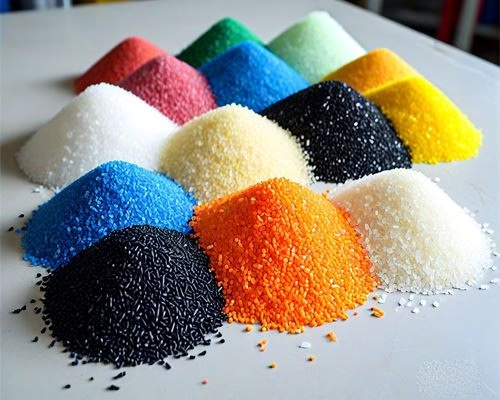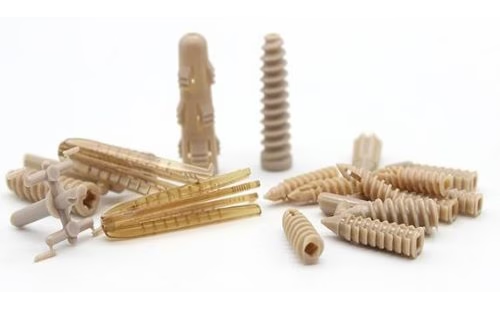What Material Is Used in Injection Molding? A Comprehensive Guide
Injection molding is one of the most widely used manufacturing processes for producing high-quality plastic components. But what materials are best suited for injection molding? The choice of material affects the strength, durability, flexibility, and cost of the final product.
In this guide, we will explore the most common injection molding materials, their properties, and their best-use applications.

1. Common Materials Used in Injection Molding
(1) Thermoplastics
Thermoplastics are the most commonly used materials in injection molding. They can be melted and re-melted multiple times, making them versatile and cost-effective.
① Acrylonitrile Butadiene Styrene (ABS)
✔ Key Features: High impact resistance, toughness, good surface finish
✔ Best For: Automotive parts, consumer electronics, household appliances
② Polypropylene (PP)
✔ Key Features: Chemical resistance, lightweight, flexible
✔ Best For: Medical containers, food packaging, automotive components
③ Polycarbonate (PC)
✔ Key Features: High transparency, impact resistance, heat resistance
✔ Best For: Safety goggles, medical devices, electronic housings
④ Polyethylene (PE)
✔ Key Features: Excellent chemical resistance, lightweight, flexible
✔ Best For: Bottles, containers, tubing, industrial components
⑤ Polyoxymethylene (POM) – Acetal
✔ Key Features: High stiffness, low friction, excellent dimensional stability
✔ Best For: Gears, bearings, mechanical components
⑥ Nylon (PA)
✔ Key Features: High strength, wear resistance, good fatigue resistance
✔ Best For: Automotive parts, mechanical gears, electrical connectors
⑦ Polystyrene (PS)
✔ Key Features: Cost-effective, good dimensional stability, easy to mold
✔ Best For: Disposable cups, medical trays, packaging materials

(2) Thermosetting Plastics
Unlike thermoplastics, thermosetting plastics cannot be re-melted once they have been set.
✔ Best For: Heat-resistant applications, electrical components
✔ Common Types: Epoxy, Phenolic, Urea-formaldehyde
(3) High-Performance Plastics
For industries that require high strength, chemical resistance, and temperature stability, high-performance plastics are used.
① PEEK (Polyether Ether Ketone)
✔ Key Features: Exceptional heat resistance, excellent mechanical properties
✔ Best For: Aerospace, automotive, medical implants
② PPS (Polyphenylene Sulfide)
✔ Key Features: Chemical resistance, high-temperature performance
✔ Best For: Electrical connectors, industrial components

2. How to Choose the Right Injection Molding Material?
Selecting the right material depends on several factors:
🔹 Application Requirements – Does the part need to withstand high temperatures, chemicals, or mechanical stress?
🔹 Cost Considerations – Thermoplastics like PP and PS are affordable, while high-performance plastics like PEEK are more expensive.
🔹 Regulatory Compliance – Medical and food-grade products require FDA-approved materials.
🔹 Aesthetic Needs – If transparency is needed, PC or PMMA (Acrylic) is a great choice.
3. Why TXS for Injection Molding?
At TXS, we provide expert material selection and customized injection molding solutions for a wide range of industries:
✅ ISO 9001, ISO 13485, and IATF 16949 certified for high-quality production
✅ Advanced mold flow analysis ensures optimal performance
✅ State-of-the-art equipment from Germany, Japan, and Switzerland
✅ 100,000-level clean workshop & 10,000-level biological lab for medical and precision parts
Need help choosing the right material for your injection molding project?
📩 Email: [email protected]
🌍 Website: www.molds-maker.com
Conclusion
Choosing the right injection molding material is crucial for performance, durability, and cost-efficiency. Whether you need affordable thermoplastics or high-performance engineering plastics, understanding their properties will help you make the best decision.
Looking for a trusted injection molding partner? Contact TXS today! 🚀
